Cultivation of Banana ;Musa paradisiaca L
Cultivation of Banana ;Musa paradisiaca L
Banana ( Musa paradisiaca L) is one of the oldest fruits known to mankind Today, it is the leading tropical fruit in the world market with a highly organized and developed industry.
Nutritive values of Banana;
As a starchy fruit, it supplies about 1.25 g protein from 100 g pulp and contains 9 mg tryptophan, essential amino acid and 400 mg aspartic and glutamic acids, which are not essential amino acids. The fat content in the pulp is only around 0.5% and does not contribute much to the energy source.
Ripe banana fruit is a source of 10 vitamins and is a rich source of vitamins A (carotene) and C (ascorbic acid) and a good source of vitamin B5 (pantothenic acid), vitamin B6 (pyridoxine) and vitamin B9 (folic acid). The B-carotene (precursor of vitamin A) level is around 350 ug among the popular banana cultivars but the Cavendish (Grand Naine) fruit contains only 75 ug of B-carotene in 100 g pulp.
Mineral contents of banana fruit is 0.8% and the predominant minerals are potassium (450 mg), calcium (10 mg), phosphorus (25 mg) and magnesium (40 mg) in 100 g edible portion. A Grand Naine fruit is rich in calcium with 140 mg. Banana fruits are very low in sodium content.
A medium-size (100 g) banana fruit provides about 7.3 (20)% vitamin A, 8% vitamin B5, 20% vitamin B6, 12.5% vitamin B9, 50% vitamin C, 13% potassium and 23% calcium of Recommended Dietary Allowance of a day. ( Source; NRC ; )
Banana is a nutritious, palatable, and easily digestible fruit and remains available throughout the year. Apart from the fresh fruit, it can be consumed as processed in various forms such as chips, powder, flakes, etc. Banana leaves are used as plates and pseudostem is chopped into pieces using as cattle feed. Climate has a marked influence on growth, production and quality of fruits. It is highly susceptible to frost and cannot tolerate arid conditions. Strong desiccating winds cause a considerable reduction in the plant growth, yield and quality of the fruits.
Soil Requirement for Banana Cultivation ;
Banana can be grown in most of the soils with varying success. Most suitable soils for its cultivation should be well-drained, rich deep loamy and silty clay soil with a pH range between 6.5 to 7
Climatic Requirements for Banana Cultivation ;
Banana is a tropical crop ( Preferred tropical humid Low lands 2000 meters above sea level). Banana grows well within a temperature range of 15 to 35-degree celsius with a relative humidity of 75% to 85%
Banana crop gives a satisfactory growth under the area with 1700 mm rainfall throughout the year. Water stagnation in the field is very injurious to the banana crop it may cause the Panama wilt disease.
Banana Varieties and its Characteristics;
Dwarf Cavendish;
The duration of this crop variety is 11 months and produces a bunch with an average weight of 20 kg, compactly arranged with 140 to 160 fruit/bunch.
Recommended for the state of Bihar, Tamil Nadu, Karnataka, Maharashtra, West Bengal, Assam, Nagaland, and Meghalaya
Rasthali Plants are medium statured and the crop takes 12 to 15 months to come to harvest with bunch weighing 16-18 kg each.
Recommended for the state of Kerala, Tamil Nadu, Andhra Pradesh, West Bengal, Assam, and Mizoram
This variety is exported to Gulf Countries, bunch weight varies from 8-15 kg having 30 – 50 fingers. The fruit has a distinct neck with thick and green peel which turns yellow on ripening.
Recommended for the state of Kerala & Tamil Nadu
Under good crop management practices, it bears bunches weighing 20-24 kg each having 150 – 300 fingers, it is well distinguished from other cultivars by its pink pigmentation on the ventral side of the midrib of young leaves.
Recommended for the states like Tripura, Meghalaya, Tamil Nadu, Arunachal Pradesh, Mizoram, Sikkim, Jharkhand, Andaman, and the Nicobar Islands, Kerala and Karnataka
First crop cycle in 12-13 months, bunch orientation is horizontal and weight varies from 18 – 20 Kg with 150 fruit/bunch.
Recommended for the state like Kerala, Tamil Nadu and Karnataka.
It is a medium to tall statured variety and is a heavy yielder with a long cylindrical bunch. On average is produces a bunch weighing 25-35 Kg and goes up to 60-65 Kg in crop duration of 11-12 months. Recommended for all over India
Elite banana cultivar and grown for red peeled delicious fruit of unique taste. The plants are tall, robust ranging from 2.5 m to 3.0 m in height, produces bunches to the tune of 20 – 30 Kg
Recommended for Gujarat, Madhya Pradesh, Chhattisgarh, Kerala, Karnataka, and Tamil Nadu
Tolerance to drought. Salt and Wind, ease of cultivation, and high productivity has favored its commercial cultivation at a larger scale in marginal soil conditions in South India. Takes about 16 months to complete first crop cycle with bunches of 25-35 Kg weight under optimum crop management conditions.
Recommended for Assam, Andhra Pradesh, Tamil Nadu.
The duration of the crop is 14 months, the average bunch weight is 12 Kg, and 6-8 hands with 80-90 fruit/bunch. Recommended for Himachal Pradesh, Andhra Pradesh, Kerala, and Tamil Nadu
The duration of the crop is 11 – 12 months, tall statured with 2.6 to 3.1 m in height and 50-55 cm circumference at the base.
Recommended for Tamil Nadu.
Propagation of Banana Plant;
a) Vegetative Method (70%)
b) Tissue Culture Method (30%)
Vegetative Method of Banana Propagation ;
Most of the commercial banana is sterile in nature and do not produce seeds Hence vegetative methods are used to grow a banana crop. The banana crop has a reduced stem called the rhizome. Rhizome has several buds sprout which forms a pseudostem and a new bulbous rhizome These newborn plants are called suckers.
The banana crop grows through these rhizomes and suckers Like sword suckers and water suckers. Sword suckers have a well-developed base with narrow sword-shaped leaf blades at the early stages which are superficially attached to mother rhizomes. Water sucker possesses broad leaves and not superficially attached to mother rhizomes, which do not produce healthy banana clumps. Suckers of 2-4 months age are selected.
Propagation of Banana through Rhizome ;
Propagation of Banana through Peepers ;
Young suckers produce a late and poor crop are known as peepers. Four-month-old suckers and split rhizomes(each having about 2.0 Kg) produced heavier bunches compared with those obtained from peepers.
Tissue Culture (TC) Method of Banana Propagation ;
The ‘banana tissue culture propagation is now a day very popular technology use to grow the banana due to its advantages such as large-scale production of disease-free planting materials, comparatively uniform plant-stand in the field, early harvesting of superior fruit bunches, round the year availability of the planting materials etc.
The season of Banana ;
- Banana suckers are planted from February to May
- whereas in north India planting is done during July-August.
- It can be planted in south India any time of the year except summer.
- The planting of tissue culture banana can be done around the year as per market demand except for the very low and high temperatures
Spacing Requirements for Banana Cultivation;
- Traditionally Banana planting is done at 1.5 m x 1.5 m by the growers with a high plant density which results in poor yields due to plant competition for sunlight.
- In the Regions under the low temperature ( 5-7 degree Celsius ) and high humidity (coastal Areas ), the planting distance should not be less than 2.1m x 1.5 m
- whereas dwarf varieties like cavendish at 1.8 m x 1.8 m apart. Planting should be done in the pits of 45 cm x 45 cm size.
- Pit Method;
For the planting of rhizome the pits are dug (.5m X.5m x.5 ) in garden system planting whereas the size of the pit is of small size in-furrow / line system planting. The pits are filled with topsoil after mixing of 10 kg FYM + 250 gms of Neem cake + 20 gms of carbofuran.
Furrow Method; In this method, 25 cms deep furrow is opened by a tractor /ridges are made at 1.5 m distance and the rhizomes are planted in these furrows followed by frequent earthing This is a very common method in the annual planting system
For the production of one metric tonne of the banana crop, the requirement of nutrients is; Nitrogen 7-8 Kg Phosphorus 0.7- 1.5 Kg, and potash 17-20 Kg. Banana responds well to the application of nutrients. Traditionally farmers use more urea and less phosphorous and potash.
To avoid the loss of nutrients from conventional fertilizers i.e. loss of nitrogen through leaching, volatilization, evaporation, and loss of phosphorous and potassium by fixation in the soil, application of water-soluble or liquid fertilizers through drip irrigation (fertigation) is encouraged. A 25-30% increase in yield is observed using fertigation. Moreover, it saves labor and time and the distribution of nutrients is uniform.
Pruning Requirement in Cultivation of Banana;
Desuckering is an important operation of removal of unwanted or superfluous suckers which develop near the base of the plant. Suckers should be removed by cutting at ground level and then pouring 2-3 drops of kerosene oil in the central core to kill the growing point of pseudostem. Removal of all suckered ones formed at the time of flowering of the mother plant has given maximum crop yield. Removal of dry leaves and pseudostems should be done when required. Tipping of floral parts 8-12 days after emergence induces ness in maturity and eliminates the use of fungicides for controlling fingertip disease.
Diseases ;
Panama wilt (Fusarium oxysporum f. sp. cubense);
A fungal disease caused by Fusarium oxysporum, which is a soil-borne fungus. The infected plants show sickly appearance with the leaves in acropetal succession becoming yellow, wilting, and ultimately collapsing at the base of petioles or in lower parts of the midrib. Pseudostem splits and breaks and plant collapse. To control this disease-resistant variety like Dwarf Cavendish, Amrit Sagar should be grown.
Control; Dip the plant suckers in Carbendazim (10g/10 liters of water) followed by two monthly drenchings after the 6 months of planting is also recommended. Application of bioagents, such as Trichoderma viride or Pseudomonas fluorescence in the soil is also very effective. Severely affected plants should be uprooted and burnt. Extremely infected soil should not be used to replant with the banana plant at least for 3-4 years
Leaf Spot, Leaf Streak or Sigatoka Disease (yellow Sigatoka-Mycosphaerella musicola; black sigatoka or black leaf streak-Mycosphaerella fijiensis)
Control; Cultural practices, for example, improved waste, control of weeds, the expulsion of maladies suckers, and embracing right dispersing is suggested. Dithane M-45 WP (in the oil-water emulsion) and Dithane M-45 (in water just) controlled Mycosphaerella fjijiensis var. difformis in banana. Foliar splash of Copper Oxychloride (3 g/liter of water) or Thiophanate Methyl 1 g/liters of water) controls the infection successfully.
The disease damages the banana plants at all stages of growth. This disease may attack the flowers, skin and distal ends of banana heads. The symptoms of the banana anthracnose appear as large brown patches covered with a crimson growth of the fungus. Due to this disease fruit turns black and shrivelled.
Control: Apply Chlorothanlonil (0.2%) and Bavistin (1 %) four times at 15 days interval is recommended. Minimizing injury and proper sanitation of handling equipment with a prompt cooling to 14°C is essential in minimising the disease in cold storage.
Fruit develop prematurely or split. Prematurely ripened fingers appear amongst otherwise green fingers in hands and bunches of Cavendish bananas. The inner portion of fruit becomes discoloured yellow, then brown or grey, developing a firm rot. Infected flower buds and peduncles are blackened and shriveled
The young banana plants are affected most severely. In the initial stages, the bacterial wilt symptoms are characterized by the yellowish discoloration of the inner leaf lamina close to the petiole. The inner portion of the stem becomes progressively discolored, cream to yellow, eventually turning brown to black. This discoloration can extend into the fruit stems and bases of younger leaves. When cut, the stem will exude bacterial ooze. Bacterial ooze may also be seen on diseased peduncle cushions.
Fruit develop prematurely or split. Prematurely ripened fingers appear amongst otherwise green fingers in hands and bunches of Cavendish bananas. The inner portion of fruit becomes discolored yellow, then brown or grey, developing a firm rot. Infected flower buds and peduncles are blackened and shriveled
Control: Early detection and destruction of the suspected banana plants may help in preventing the spread of the disease. All the tools used for pruning and cutting should be disinfected with formaldehyde. The disease-causing bacterium on the male flowers is spread by the insects, removal of the male flowers as soon as the last female hand emerge help in minimizing the spread of the disease.
The pathogen affects even the immature fruits and the upper portion of the peduncle is exposed to the sun when the bunch emergence occurs during summer months and due to reduced functional leaves reduced
The infection, which occurs in the perianth, spreads to fingers causing blackening of the skin, shrinkage, and folding of the tissues.
The infected tissues are corrugated and covered with conidiophores and powdery grey conidia just resemble ash on a cigar end.
(appears similar to the ash of a cigar).
Control: The complete removal of pistil and perianth by hand 8-10 days after bunch emergence and apply the spraying of the bunch with Dithane M -45 (0.1%) or Topsin M (0.1%) controls the disease effectively. Adopt minimizing bruising; with a prompt cooling up to 14°C; The proper sanitation of Banana handling facilities may reduce the incidence occurs in the cold storage.
The presence of dead or drying suckers can be easily noticed in advanced cases called heart rot which results from rotting of the heartleaf and central portion of the pseudostem
Initially, affected banana plants show severe symptoms of mosaic in young growth. which shows broadly streaked chlorotic or yellow-green bands and patches or chlorotic mottling are found in patches over the entire leaf lamina
The leaves became narrower and smaller than normal leaves and the infected plants are dwarf and show stunted growth. Such plants do not produce bunches but behave like a virus reservoir.
The initial transmission occurs through the use of infected daughter suckers from diseased plants and the secondary infections of the disease are spread through melon aphid, Aphis gossypii, and Aphids maidis
Control: Proper field sanitation, good drainage, and proper spacing of the plants can reduce the incidence of the disease occurrence. To stop the spread of the disease, the Application of Captan or Dithane M-45 or Dithane Z- 78 is effective.
Banana Bunchy Top Virus (BBTV);
Initially, dark green streaks appear in the veins of the lower portion of the leaf midrib and the leaf stem
and they appear to be “bunched” at the top of the plant, the symptom for which this disease is named bunchy top.
Severely infected banana plants usually will not fruit, but if the fruit is produced, the plant hands and fingers are likely to be distorted and twisted.
This disease is transmitted by infected suckers and banana aphid
Control: Use virus-free planting materials remove and rouging of infected banana plants Maintain clean, the weed-free field for early detection of diseased suckers Inject 4 ml of Fernoxone solution(50g in 400 ml of water) into the plant
For controls of vectors Apply monocrotophos 4 ml (1:4) at 45 days interval from 3rd month till flowering Spraying plants with phosphamidon 1ml /l or Methyldemeton 2ml/ l or monocrotophos 1ml /l
Banana Streak Virus (BSV);
The primary symptom shown by BSV is yellow streaking of the banana leaves, which later on turn into necrotic producing a black-streaked mass that is promptly visible in older leaves of the plants. The transmission of disease mostly occurs through the infected planting materials, it is also found that mealybugs (Planococcus citri) and more probably Saccharicoccus sacchari are also believed to transmit BSV. Avoid the Shoot tip culture for banana vegetative propagation.
Control: Always use clean planting material and quarantine. Removal of infected plants from the field and control of vectors is an effective way of controlling the severity of the BSVdisease.
Banana Bract Mosaic Virus (BBMV);
The symptoms of this disease appear as yellowish-green bands or may the mottling occur over an entire area of young leaves. Abnormal thickening of leaves veins appears on infested plants leaves. Bunch development is also being affected.
Control: Remove and destroy affected plants along with their rhizome. cucurbits cultivation in and around the banana field should be avoided.
Pest of Banana Crop;
Pseudostem borer(Odoiporus longicollis);
Adults of the borer may be reddish-brown or black in color. it is most active during the summer and the monsoon periods. The grubs of the borer create bore into the stem and feed inside the stem. A primary symptom of an infestation is in the form of exudation of plant sap and blackish cloured mass that comes oozes out from the hole bored by the grubs. Ultimately, the entire plant dies.
Control: In case of heavy infection the affected banana plants should be uprooted and burnt. Celphos (3 tablets/plant) is advised for the control of its egg, larva, pupa, and adult population After inserting the tablet inside the pseudostem, the slit should be closed with the help of mud. Clean crop cultivation is one of the important measures for its control. Spraying of Carbofuran (3 g of granules/stool) is the most effective way to control the pest. Alternately, the application of Endosulphan (0.04%) or Carbaryl WP (0.1%) also controls the Borer population of the banana plant.
Rhizome Weevil (Cosmopolites sordidus);
The larvae or grub of the Banana weevil borer makes a tunnel for feeding in the banana plant. In extreme cases, the tunnels may extend up to several feet in the banana stem. The corm of banana plants decays and becomes a mass of rotten tissue. Injured corm checks the nourishment movement going to the plant. Leaves of banana plants turn yellow, wither and die maturely. In severely infected plantations, production is too low. Adults of insects feed on dead or dying banana plants and reside under fresh cuts or in the rotting pseudostems. The female weevil lays eggs in the rotting pseudostem or female weevil may move to a living plant to lay its eggs which are inserted singly into a hole. The borers spread through planting material.
Control: Select healthy planting material. Aways uses clean planting material which is to be free of weevils. Do not cultivate banana crop in the same field to avoid initial infestation. The pieces of old rhizomes or pseudostems 1-2 feet long are cut down split and placed on the plantation floor between plants. Adult beetles migrate into these plant stems and can be collected by hand and poisoned. Dip the suckers in Monocrotophos (0.5%) for 30 minutes to protect the rhizome from weevil attack before the planting.
Banana Aphid (Pentalonia nigronervosa);
The Aphids are the vector of the virus causing bunchy top disease. The nymphs are yellowish-green in colour and adults are brownish-black in colour suck cell sap and devitalise the plants. Infested parts become discoloured and malformed. High humidity favours is favourable for its multiplication. The aphids are mostly seen on the lower surface of the leaves near the axils and the pseudostems.
Control: Ensure clean cultivation of the Banana crop. Healthy and pest free suckers must be used for banana planting it will check the pest incidence chances. Destroy all the diseased plants with rhizome and Apply methyl demeton 25 EC 0.05% Encourage activity of predators like Scymnus, Chilomenes sexmaculatus, Chrysoperla carnea and other coccinellids Use Beauveria bassiana



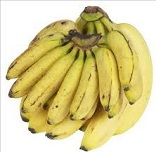
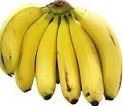

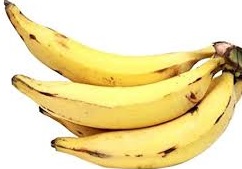
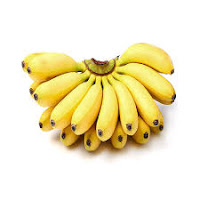

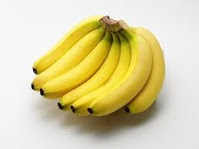

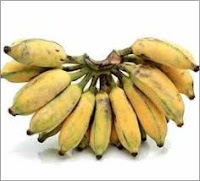
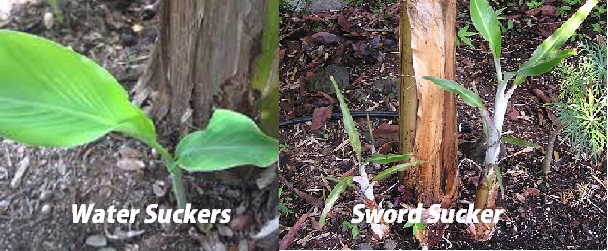
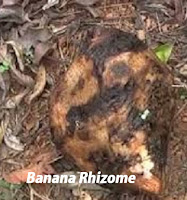
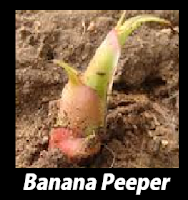
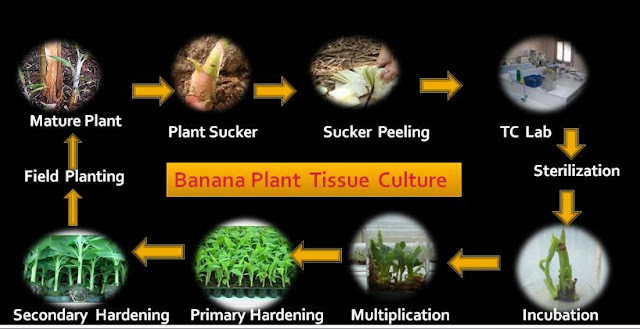












Pingback: Multi-layer farming Model Objective Process and Advantages - Agrovista-Farming
Pingback: Advantages and Features of the Drip or Trickle Irrigation System - Agrovista-Farming